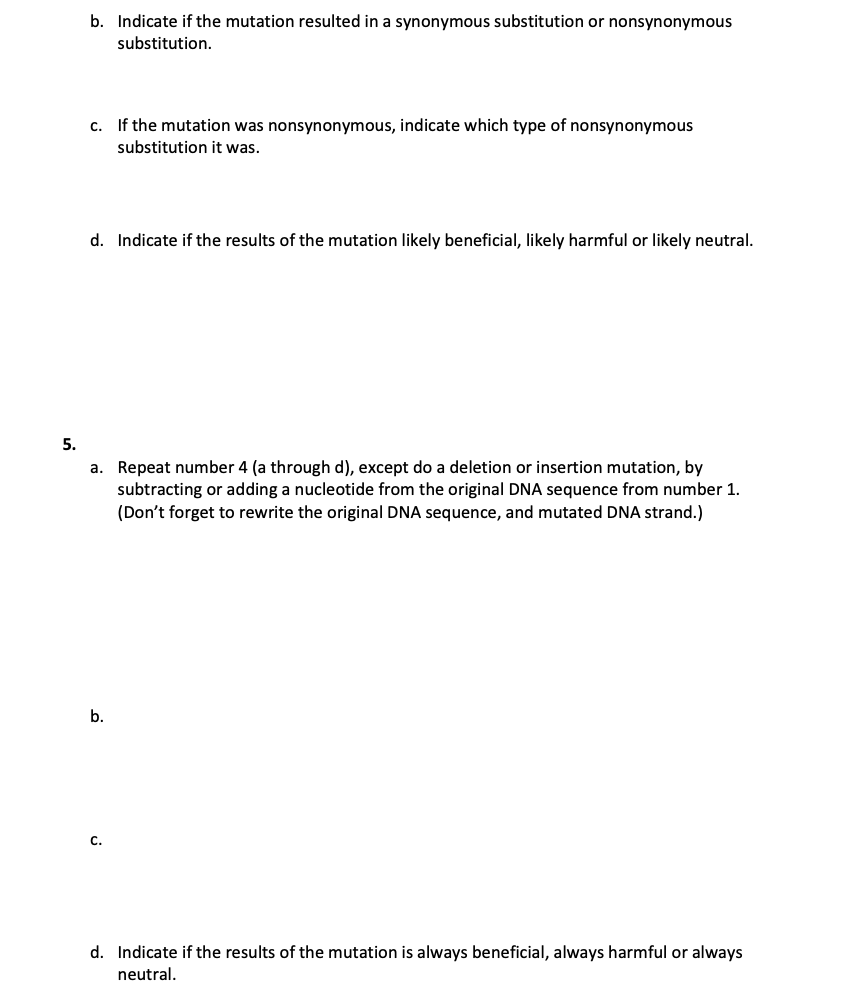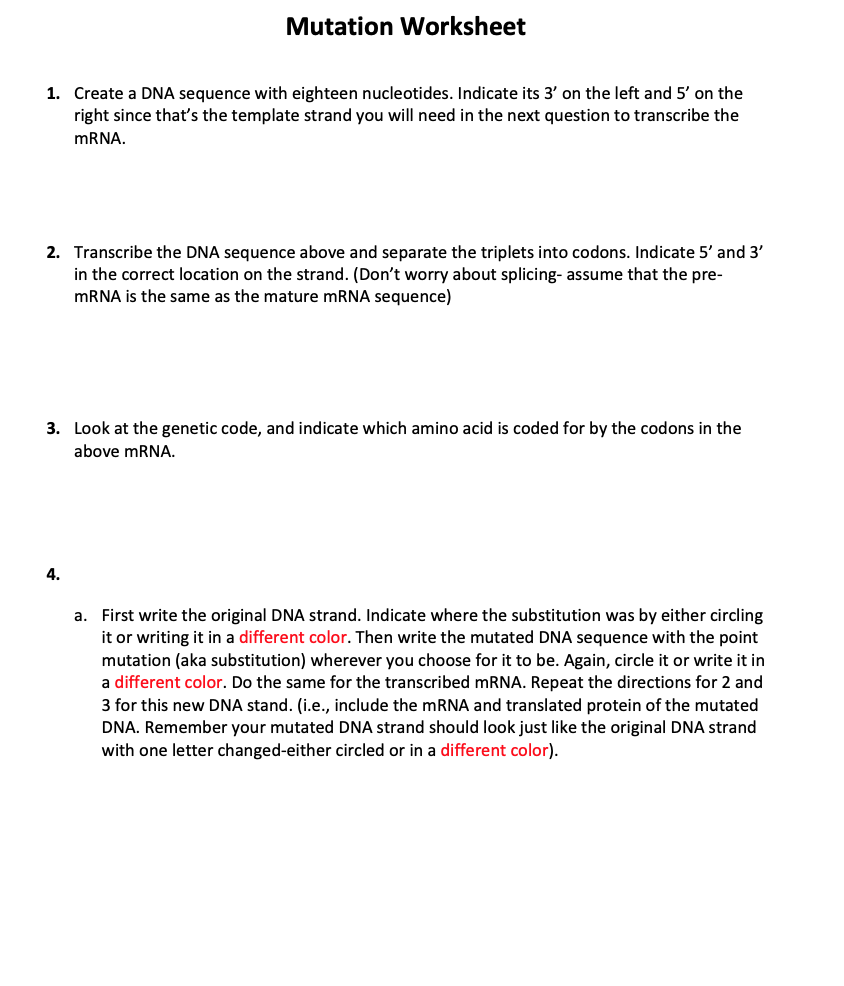4. ANSWER BELOW QUESTIONS: A. First write the original DNA strand. Indicate where the substitution was by either circling it or writing it in a different color. Then write the mutated DNA sequence with the point mutation (aka substitution) wherever you choose for it to be. Again, circle it or write it in a different color. Do the same for the transcribed mRNA. Repeat the directions for 2 and 3 for this new DNA stand. (i.e., include the mRNA and translated protein of the mutated DNA. Remember your mutated DNA strand should look just like the original DNA strand with one letter changed-either circled or in a different color). B. Indicate if the mutation resulted in a synonymous substitution or nonsynonymous substitution. C. If the mutation was nonsynonymous, indicate which type of nonsynonymous substitution it was. D. Indicate if the results of the mutation likely beneficial, likely harmful or likely neutral.
Gene Interactions
When the expression of a single trait is influenced by two or more different non-allelic genes, it is termed as genetic interaction. According to Mendel's law of inheritance, each gene functions in its own way and does not depend on the function of another gene, i.e., a single gene controls each of seven characteristics considered, but the complex contribution of many different genes determine many traits of an organism.
Gene Expression
Gene expression is a process by which the instructions present in deoxyribonucleic acid (DNA) are converted into useful molecules such as proteins, and functional messenger ribonucleic (mRNA) molecules in the case of non-protein-coding genes.
ANSWERS 1-3 were answered but I need 4 and 5 answered please.
Three parts are solved in case of interlinked question as per our company policy. If you want assistance with other parts, please post separately.
The DNA is made up of deoxyribonucleotide sub units. It is the genetic material.
The deoxyribonucleotides consist of deoxyribose sugar, phosphate group and nitrogenous bases. Nitrogenous bases are adenine, guanine, thymine and cytosine.
Answer 1) The sequence of template strand in 3' to 5' sequence is:
3' TACCCGCCAGCCTACATC 5'
Answer 2)
The mRNA strand is complementary to the template strand. The RNA polymerase synthesises mRNA. The A, U, G and C are present in mRNA with respect to the T, A, C and G in DNA.
The mRNA sequence is: 5' AUGGGCGGUCGGAUGUAG 3'
The mRNA sequence in form of codon is: 5' AUG GGC GGU CGG AUG UAG 3' The codon is made up of three nucleotides.
Answer 3) The mRNA codon chart helps to find the sequence of amino acid from a codon. The start codon initiates translation. Sto codon (UAA, UAG or UGA) terminates translation. The protein sequence is: N- met- gly- gly- arg- met- C
4. ANSWER BELOW QUESTIONS:
A. First write the original DNA strand. Indicate where the substitution was by either circling it or writing it in a different color. Then write the mutated DNA sequence with the point mutation (aka substitution) wherever you choose for it to be. Again, circle it or write it in a different color. Do the same for the transcribed mRNA. Repeat the directions for 2 and 3 for this new DNA stand. (i.e., include the mRNA and translated protein of the mutated DNA. Remember your mutated DNA strand should look just like the original DNA strand with one letter changed-either circled or in a different color).
B. Indicate if the mutation resulted in a synonymous substitution or nonsynonymous substitution.
C. If the mutation was nonsynonymous, indicate which type of nonsynonymous substitution it was.
D. Indicate if the results of the mutation likely beneficial, likely harmful or likely neutral.
5. ANSWER BELOW QUESTIONS:
A. Repeat number 4 (a through d), except do a deletion or insertion mutation, by subtracting or adding a
B.
C.
D. Indicate if the results of the mutation is always beneficial, always harmful or always neutral.


Trending now
This is a popular solution!
Step by step
Solved in 2 steps

Where is the substitution indicated on the original DNA strand? May you please Write it out and bold the

